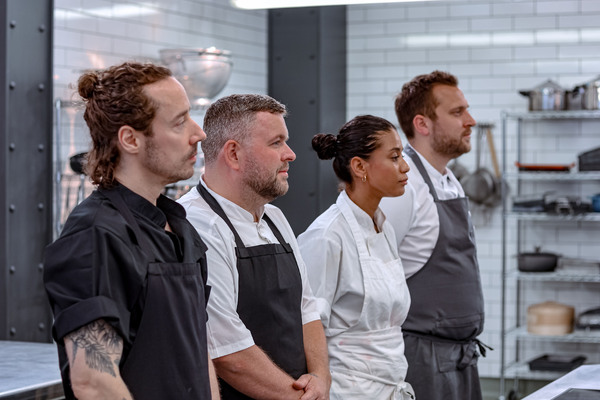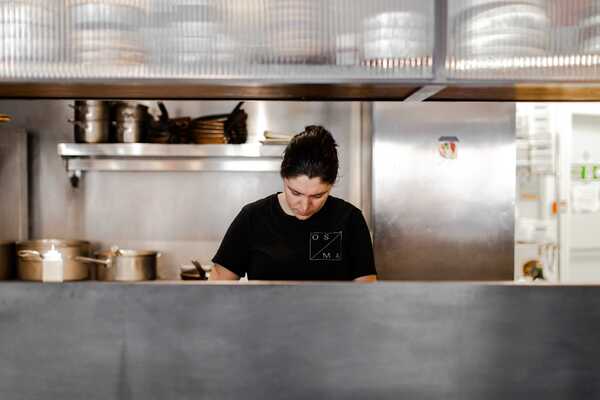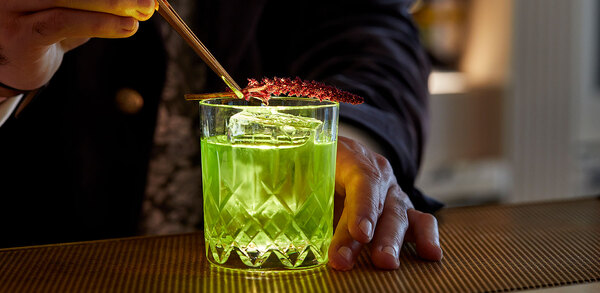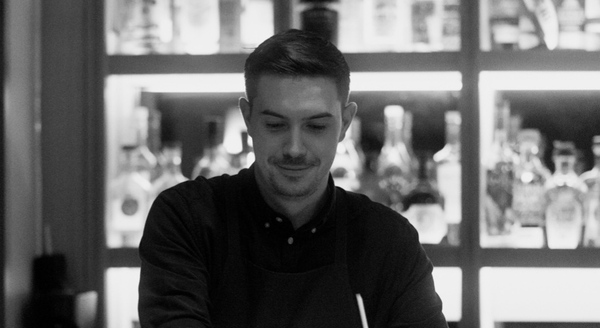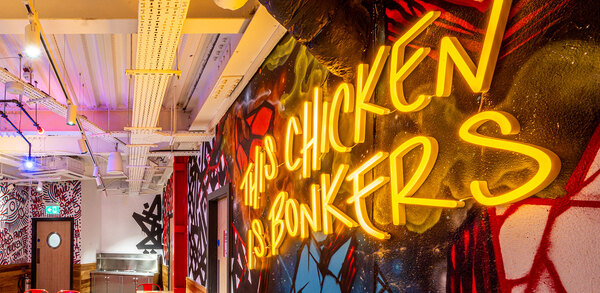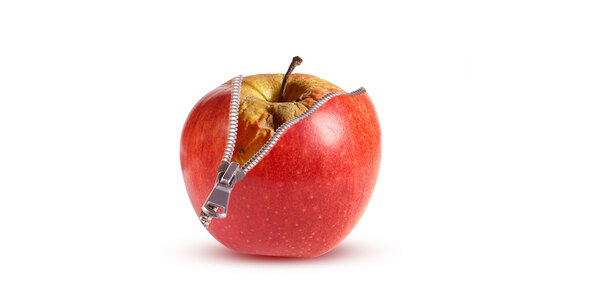How to cost a menu
Getting your prices right can be the difference between success and failure. Tom Vaughan asks experts for their menu costing secrets
“Wages are higher than they’ve ever been. Energy’s higher than it’s ever been. Basically, every cost is increasing, including food. If there was any margin for error, that has now vanished,” says Sam Harrison, owner of Sam’s Riverside in Hammersmith, London.
To cost a menu, you need to identify the direct and indirect costs involved in operating the menu. Balancing these costs will determine the ultimate success of a restaurant.
Direct costs
Direct costs, or costs of food, relate to the ingredients that go towards compiling the menu. In order to identify the food cost of a dish, absolutely everything that goes into producing it has to be taken into consideration – salt, pepper, butter, even oil in the deep-fat fryer. “Lots of people forget to include the cost of fryer oil,” says Stefan Crosser of hospitality consultants Egg Soldiers. “Oil has gone up a lot recently. If you’re buying in big barrels of oil and not including that in your dish costs, then you are under-costing your dish.” Estimate 20g or 30g of oil per portion, he suggests.
Portion size is critical, says Steve Groves, executive chef at Glyndebourne, the opera house in Sussex. “I’ll get chefs on meat and fish sections to cost out their portions every day. Is the yield smaller on a 2kg fish than a 4kg fish? Have the prices gone up since the last order? It’s critical that you know exactly how much every component costs to put on the plate.”
This is all the more important in the face of soaring food inflation. “It’s very easy to get the cost of an item wrong because things change almost on a on a daily or weekly basis,” says Harrison.
“I’ve got one client whose beef has gone up by 36% since 2021, which is staggering,” adds hospitality consultant Laura Anne Harvey. More than ever, it is absolutely essential to negotiate the best possible price for your ingredients, says Olivier Lavigne du Cadet, managing director at Insight Hospitality. “If you don’t have the purchasing power as an individual restaurant, try and get onto a purchasing platform so you can get better deals.”
Bear in mind that some dishes will be cheaper to produce than others. “Pizza and pasta are traditionally dishes that are cheaper to produce,” says Des McDonald, founder of Insight Hospitality. Plant-based dishes are also, as a rule of thumb, cheaper than meat dishes, says Groves.
Harvey likes to recommend that her clients think of their cost of goods as what it costs to give the customer the actual product. “That includes disposable packaging, napkins and disposable cleaning products,” she says.
It’s also vital to factor in the wastage involved in making a dish – from fish bones to vegetable peelings. Harrison says he likes to add on 5% wastage to each dish. Meanwhile, Harvey recommends differing amounts depending on the type the hospitality business. “In a fast-food venue or quick service restaurant, where a lot of the food comes pre-prepared, I wouldn’t allow more than 1% of waste in a month. But in a full service, that could go up to 4%-5%.”
Many chefs and restaurants are now getting increasingly savvy about food waste. “We buy in whole lobsters so we use the shell afterwards,” says Harrison. “We serve croquettes with a lobster mayonnaise made from shell. We’ve already paid for the lobster element of that dish, so it’s not wasted – it’s adding value somewhere else.”
Ramael Scully, of London’s Scully restaurant, says chefs try and re-use waste as much as possible. “We save all our potato and vegetable peelings, dehydrate them and turn them into powders or misos to serve on dishes,” he says.
Groves likes to also monitor plate waste. “Every finished plate that comes back is scraped into a plastic waste tub, which we measure by the litre at the end of service. If those bins are full, it could mean that your portion sizes are too large and need to be addressed.” Reducing waste both in cooking and in portion size helps keep food costs as low as possible.
Gross profit
Gross profit or GP is the most important figure in costing a menu. “Gross profit is the profit that you walk away with for selling a food or beverage item before you get into your other costs,” says Harrison. So if a dish costs £3 to produce and sells for £10, the GP is £7 and the GP% – the gross profit measured as a percentage of the selling price of a dish – is 70%. GP% is the figure that is widely considered to be the most important measure of profitability in a restaurant.
Indirect costs
The GP% needs to be high enough to sustain all the indirect costs in running a restaurant and then provide a profit on top. “In very simplified terms, it’s good to think of restaurants as a 30-30-30 model, where your food and beverage cost is 30%, your wages are 30%, your other costs – rent, overheads, everything else – is 30%. Which means that you are going to be left with a 10% operating profit,” says Harrison. “But in that model, if that 30% food cost becomes 35% and your 30% wages becomes 35%, you’re left with nothing. The margin for error is very fine.”
One important figure to remember is VAT – with operators often overlooking or miscalculating it, says Crosser. “To subtract VAT you can’t just take 20% off the menu price of the dish. That isn’t how VAT is calculated. The formula you should use is to take the price of your dish on the menu and divide it by 1.2.” For example, a dish selling at £10 would leave you with £8.33 after VAT.
Another indirect costs that restaurants need to closely monitor are energy bills, which have increased hugely over the last two years. According to research from comparison service Uswitch for Business in February 2023, a third of every diner’s restaurant bill is going towards paying the venue’s energy costs. Keeping these costs as low as possible is essential for the profitability of a restaurant, says McDonald: “When we start with a new client we always do a sort of restaurant MOT – a helicopter look at the business – and a big part of this is energy consumption. Are there ways of switching cooking methods? If it’s a new kitchen, could they install induction hobs instead of gas? If not, could they use more low-energy cooking methods like sous vide?”
Harvey says that if a restaurant has cash reserves, it should consider an energy survey to see how much investing in new equipment – such as fridge freezers that hold temperature better – could save them in the long run. She also likes to recommend restaurants appoint a ‘green hero’, a sustainably-minded member of staff who can police over-use and receive a bonus if the venue’s energy bills are reduced.
How to price up a menu and stay in profit
It is generally agreed that for a restaurant to be profitable, it’s GP% across its whole menu needs to average 70%. A savvy restaurateur will balance this out between cheap-to-produce dishes with a high GP% (say, 80%) and expensive-to-produce but premium dishes with a low GP% (say, 60%).
“If I want to get some luxury, expensive ingredients onto my menu like truffle, then I know I will have to take a hit on that dish, otherwise people won’t buy it,” says Groves. “So I’ll make sure I balance that out across the menu with higher margins dishes such as plant-forward ones that can often be cheaper to make.”
Scully says every chef should have a handful of staple high-margin dishes on their menu that never leave and which diners love. “We have a pulled beef tendon dish that costs me probably just £1.50 to make, but I know it sells well. The only cost is my labour as it takes a long time to make. When you know a dish isn’t going to leave your menu, you can make a deal with suppliers to get a steady price over three, six months or more.”
It is also worth remembering that a high GP doesn’t always equate to more money – it all depends on the dish’s selling price. “A lot of people just end up looking at the GP% of dishes and don’t look at the cash earned on each dish,” says Crosser. For example: a pasta dish that is priced at £15 and costs £3 to produce might have a high margin of 80%, so will gross £12 before VAT. Meanwhile, a beef dish priced at £40 that costs £16 to produce might have a low margin of 60% but will gross £24, double the pasta dish.
Harrison’s lobster roll dish is one of the more popular items on his menu, he says, and is a good earner despite having a low GP. “If I marked it up 70% it would be on at around £60 and no one would buy it because we’re not in Mayfair. But it sells at £39.50, I get a good cash margin on it and I like to think that the customer is getting good value.”
An average 70% is a good starting point to aim for, says Harvey, but she recommends that restaurants tailor their GP% average to their circumstances. “I’ve worked with some clients who operate out of a shipping container, they’ve got very low overheads, so they can afford to have a poor GP and charge less than their bricks and mortar competition. But then I’ve got clients in central London, who need to aim higher than 70% because their overheads and their rents are so high. So I don’t agree on a one-size-fits-all for the gross profit target.”
It’s also essential to watch menu prices at similarly bracketed restaurants, says McDonald. “You should watch six to eight competitors and see what they are selling, say, their risotto primavera or pizza margherita for. If you can buy cheaper because you have improved buying power, undercut for a pound or two, while offering the same or a better quality product, and you are in a really strong position. You’ve got to use as many tactics as possible. It’s guerrilla warfare out there in a saturated market, so you’ve got to have a point of difference.”




